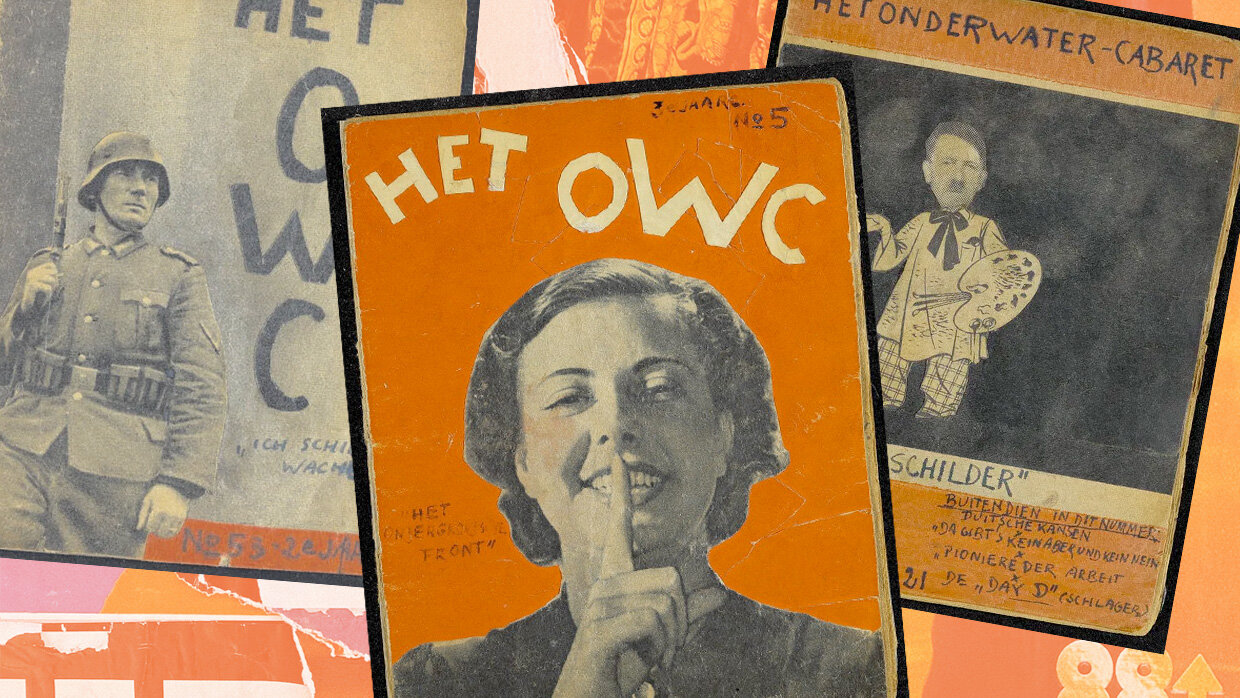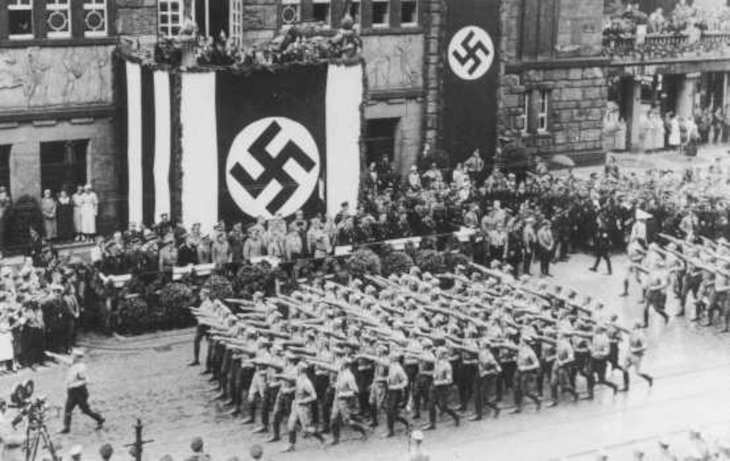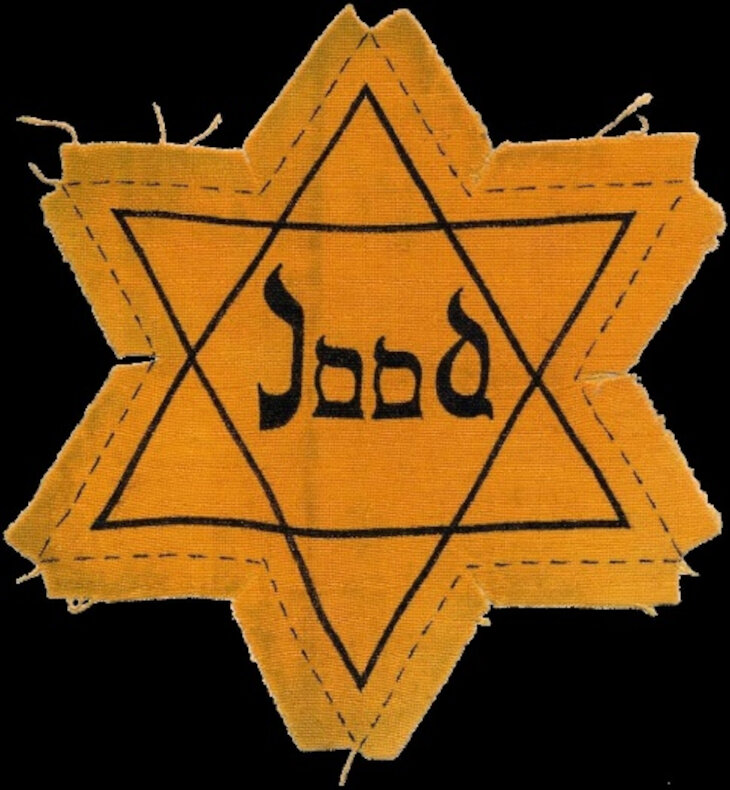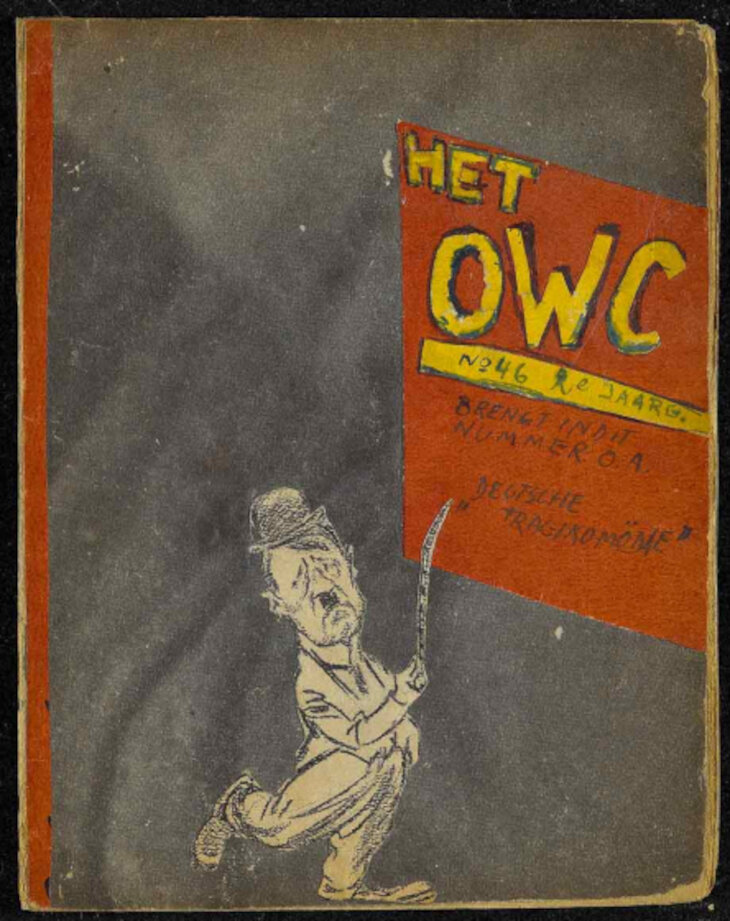 Iran’s Attack on Israel
Iran’s Attack on Israel


8 min read
Hiding in an attic, Curt Bloch created anti-Nazi journals every week for nearly two years.
A new exhibit opening in February 2024 in the Jewish Museum of Berlin highlights what might be the most unusual anti-Nazi magazine produced during World War II. Het Onderwater Cabaret (The Underwater Cabaret) was produced in the Dutch city of Enschede and had a very small run: most weeks only a single issue was produced, although it’s estimated that many people read each edition. The magazine poked fun at Nazis and inspired readers with its bold, mocking of fearsome Nazi figures. Each edition featured clever poems and thought-provoking pictures, often in collage form.
 A cover of The Underwater Cabaret
A cover of The Underwater Cabaret
The man behind The Underwater Cabaret was Curt Bloch, a German Jew living in the Netherlands. Remarkably, he produced his weekly magazine as he hid in a tiny attic. Righteous Gentiles kept him and other Jews alive, brought Curt the materials he needed to produce his weekly journal, and disseminated it.
When Hitler was elected Chancellor of Germany in 1933, Curt Bloch was a 24-year-old legal clerk in the western German city of Dortmund. Even before Hitler’s election, Dortmund was a hotbed of anti-Jewish hatred. Home to a little over 4,000 Jews (out of over half a million residents), Dortmund soon increased its anti-Jewish persecution after Hitler’s rise to power. Local authorities arrested hundreds of Jews, the city stopped doing business with Jews and ordinary shoppers shunned Jewish stores. Volunteers stood in front of Jewish-owned businesses making sure that no customers entered. Local authorities affixed posters on the walls of buildings accusing Jews of being “traitors, murderers, warmongers and defilers of women.”
 Battalions of Nazi street fighters salute Hitler during an SA parade through Dortmund. Germany, 1933
Battalions of Nazi street fighters salute Hitler during an SA parade through Dortmund. Germany, 1933
After a co-worker threatened to kill him, Curt knew it was time to leave. He gave up his legal career and moved to Amsterdam, intending to eventually leave Europe when he could. Unable to practice law, Curt took a job with a Persian rug salesman and plotted his escape, but Germany’s invasion of the Netherlands in May 1940 trapped him in Nazi Europe once again. Within months, all Jews in the country had to register with the new Germany authorities; Curt was one of 25,000 Jewish refugees from Germany who’d fled to the Netherlands hoping (and failing) to find safety there.
The Nazis’ antisemitic decrees were met with some resistance from ordinary Dutch people. After Nazis deported hundreds of Dutch Jews who brawled with Nazi officials, workers across the Netherlands went on strike to protest this terrible decree. The nationwide strikes lasted for three days before Nazis succeeded in breaking them up. When Dutch Jews were ordered to wear a yellow Jewish star on their clothing in April 1942, some Dutch people showed solidarity with their Jewish neighbors by wearing yellow stars with the names “Catholic” or “Aryan” them. For a while, some Dutch people made a point of treating yellow star-wearing Jews with particular kindness, speaking with them warmly in public settings or offering their seats to Jews on public transportation. Nazi authorities, including collaborating Dutch officials, responded forcefully, crushing dissent and enforcing anti-Jewish decrees.

The Netherlands started deporting Jews in 1942; by 1943 nearly all Dutch Jews – about 107,000 had been sent to concentration and death camps. Only 5,000 survived. In 1943, Dutch collaborators formed groups that searched for Jews hiding in homes and in the countryside. Of approximately 25,000 Dutch Jews who hid from the Nazis, about a third were discovered and sent to Nazi death camps.
Most Jews had to find their own hiding spots, but some incredibly brave non-Jewish Dutch people rose up to help as well. As Yad Vashem describes: “A few Dutch rescue groups of students and or church circles came into being spontaneously and sporadically and helped find shelter for Jews, especially children.” Yad Vashem has recognized 5,982 Righteous Among the Nations in the Netherlands, those who risked their lives during the Holocaust in order to save Jewish lives. That number dwarfs those in often larger neighboring countries such as Belgium (1,787), Germany (651), France (4,206), or Denmark (22).
One of those Righteous Among the Nations heroes was a Dutch Reformed Church priest named Leendert Overduin in the Dutch city of Enschede. Along with about 50 fellow resistance members, Leendert Overduin formed an organization called the Group Overduin which found local families willing to shelter Jews. They saved the lives of a thousand Jews.
 Jews in Westerbork boarding the deportation train to Auschwitz (Yad Vashem)
Jews in Westerbork boarding the deportation train to Auschwitz (Yad Vashem)
Curt Bloch’s company transferred him to Enschede to escape anti-Jewish persecution in Amsterdam and The Hague. There, Curt began to work with the local Jewish council desperately trying to find ways to help Jews escape. He met members of the Group Overduin, who offered to help Curt “disappear”. A local couple, Bertus and Aleida Menneken, agreed to hide Curt, along with two other Jews, in their modest two-story brick house on Plataanstraat 15 in the western part of Enschede. It was very risky: their neighbors would have noticed any sign that the couple was shielding Jews.
 Curt Block
Curt Block
In August 1943, Curt said goodbye to an ordinary existence in which he could walk around, go outside, or breathe fresh air. He crammed into a tiny crawl space under the Menneken’s roof, which he shared with 44-year-old Bruno Lowenberg and a 22-year-old woman named Karola Wolf, known as Ola. The small room had one tiny window. It was their home for the next two years. The Mennekens, and a radio, would be their only contact with the outside world.
Curt Bloch refused to be silenced even in his claustrophobic hiding place. He wrote copious verse, much of it dedicated to Ola, and songs which made fun of Nazis. The Mennekens brought him paper, glue, pens, and newspapers, and soon Curt was using these to fashion his own weekly publication, The Underwater Cabaret. The name was a play on The Sunday Afternoon Cabaret, a German-language show that played on Dutch radio every week. Curt’s magazine parodied Nazis, calling them “murderers and liars” and predicting their eventual defeat, an audacious move at a time when opposing Nazi rule could mean imprisonment, torture, and death. Each cover featured original artwork, usually in collage form using pictures from magazines the Mennekens brought him.

The Underwater Cabaret often mocked Joseph Goebbels, the Nazis’ chief propagandist. A typical poem is this poem titled The Way to Truth, about Goebbels:
If he writes straight, read it crooked.
If he writes crooked, read it straight.
Yes, just turn his writings around.
In all his useful words, harm is found.(Translated by Gerard Groeneveld, author of The Underwater Cabaret: The Satirical Resistance of Curt Bloch, 2023)
Curt produced an issue every week, never missing a week. He shared his magazine with Bruno, Ola, the Mennekens, and others. Writer Gerard Groenveld, who researched Curt, believes that up to 30 resistance members and Jews in hiding read each copy before returning it to Curt. Eventually, he produced 95 weekly issues.
His final issue was produced in April 1945, after he was liberated by Allied soldiers. That magazine’s title was “Above Water” and sported a collage of two figures climbing out of a hiding place. In that final issue, Curt included his only English language poem, which looked forward to the liberation of Berlin by the Soviet army, which was fast closing in on the German capital, and Hitler’s eventual comeuppance:
At Berlin with our Russian friends,
The German Nightingale,
Herr Hitler, doesn’t sing today
He’s feeling, after some delay
A tie around his neck.
 Cover of the final issue
Cover of the final issue
After the war, Curt found that he was the only member of his family who was still alive. He married another Holocaust survivor, Ruth Kan, who’d been in Auschwitz. They moved to New York, had two children, and eventually built up a business as antiques dealers. Curt seldom talked about his wartime experiences; his daughter Simone remembers him sometimes reading from and showing dinner guests his precious collection of The Underwater Cabaret editions, which he always kept on his bookshelf.
Curt died in 1975 at the age of 67. For years his collection of magazines sat unread until his granddaughter Lucy began to learn German and did research about her grandfather in Germany. As she read her grandfather’s remarkable collection of magazines, she realized it was a significant history of the Holocaust. Lucy and her mother Simone began showing it to historians and spreading awareness of this special publication.

The Underwater Cabaret is finally getting the attention it deserves. In February 2024, the Judisches Museum Berlin will feature the collection in a special exhibition which takes its title from a line of one of Curt’s poems: “My Verses are Like Dynamite.” “Any time that an almost completely unknown work of this caliber comes to the fore, it’s very significant,” explains Aubrey Pomerance, the exhibit’s curator. “The overwhelming majority of writings that were created in hiding were destroyed. If they weren’t, they’ve come to the public attention before now. So, it’s tremendously exciting.”
Curt Bloch’s brilliant works buoyed his spirits and the moods of his fellow hidden Jews every week for years. His creativity and refusal to be cowed or silenced are an inspiration.

Do you know what would be a "miracle"?.....if Holocaust deniers read these stories.
What an exceptional man! Even while hiding out in such dire conditions, he had the wherewithal to promote some optimism and humor to others. What a great man!
And the ones who sheltered them were amazing! I would have liked to hear what became of them.